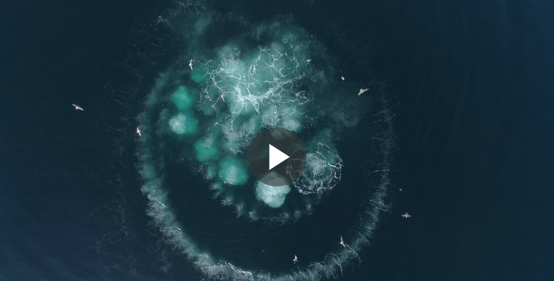Who can resist the allure of a whale tale? Humpback whales, in particular, continue to captivate scientists and marine enthusiasts alike with every new discovery. Recent research has unveiled that these majestic creatures not only use tools but also possess the remarkable ability to create and modify them to enhance their hunting techniques. This newfound behavior offers a glimpse into the sophisticated cognitive abilities and social structures of humpback whales, challenging our previous understanding of marine life.
Humpback whales are far more than just enormous inhabitants of the ocean; they are key players in their intricate marine environments, contributing significantly to the health and balance of their ecosystems.
At the forefront of this groundbreaking discovery is Professor Lars Bejder, the Director of the Marine Mammal Research Program (MMRP) at the University of Hawai’i. Bejder and his team have been conducting extensive studies on humpback whales in the southeastern region of Alaska—a critical feeding ground for these marine giants, rich in the nutrients they need for survival.
The researchers uncovered something truly astonishing: humpback whales are not merely surviving in their environment; they are actively shaping it. Their feeding habits and social behaviors are crucial to the local ecosystem, influencing prey distribution and the overall health of marine habitats.
One of the most dramatic discoveries was the whales’ use of “bubble nets” as a hunting tool. These complex structures, created by the whales, trap schools of fish, making the hunt more efficient and conserving energy. By controlling the size, depth, and spacing of the bubbles, humpback whales can capture up to seven times more prey in a single dive, showcasing their intelligence and adaptability.
Humpback whales are well-known for their complex songs and breathtaking breaches, but their survival in the vast ocean relies heavily on efficient hunting strategies. These whales undertake long migrations, traveling thousands of miles to the warmer waters of Hawaiʻi to breed and raise their young. The calories they accumulate during the feeding season are essential for sustaining them throughout this journey.
Professor Bejder highlights that “Success in hunting is key for the whales’ survival,” and much of this success is attributed to their bubble-netting strategy. This technique, where groups of whales collaborate to trap fish, not only demonstrates their cooperative nature but also serves as a stunning visual display.
While the concept of animals using tools is not new, what distinguishes humpback whales is their ability to create and refine these tools. This exceptional capability provides deeper insight into their intelligence and adaptability in their natural habitat.
Observing these giants of the sea is no simple task, but advances in technology have allowed scientists to study their behavior more closely than ever before. William Gough and his team from MMRP used non-invasive suction-cup tags and drones to monitor the whales’ movements and collect data on their hunting techniques.
“We deployed non-invasive suction-cup tags on whales and flew drones over solitary bubble-netting humpback whales in SE Alaska,” Gough explained, highlighting the innovative methods used in their research.
As we marvel at the intelligence of humpback whales, it is crucial to remember the importance of their conservation. The insights gained from these studies are vital for developing effective conservation strategies, particularly in preserving their feeding grounds.
“This little-studied foraging behavior is wholly unique to humpback whales,” notes Gough, emphasizing the significance of these findings. Dr. Andy Szabo, Executive Director of the Alaska Whale Foundation (AWF), also highlighted the adaptability of humpback whales in the face of environmental challenges, suggesting that their behavioral flexibility could be key to their survival.
The discovery of tool use in humpback whales marks a significant milestone in marine biology, paving the way for further exploration. Collaborations with institutions like the MMRP and AWF, coupled with cutting-edge technology, promise to reveal even more about these fascinating creatures and their interactions with the marine ecosystem.
Quotes
- Hal Whitehead (Cetacean Researcher): “The cultural transmission of hunting methods among humpback whales is a clear indication of their complex cognitive abilities. These whales are not just reacting to their environment; they are actively shaping it through learned behaviors.”
- James Nestor (Author of Deep): “Humpback whales have an almost uncanny ability to strategize and work together. Their use of bubble nets to corral fish is one of the most remarkable examples of tool use in the animal kingdom.”
Frans de Waal (Primatologist and Ethologist): “The use of bubble-net feeding by humpback whales demonstrates an advanced understanding of cause and effect, as well as the ability to work cooperatively towards a common goal. It’s a clear sign of their impressive cognitive capabilities.”

